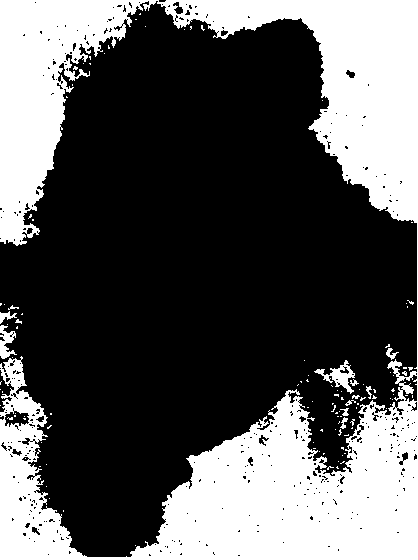Method for preparing food hygiene-level active carbon by use of bagasse
A food hygiene grade, bagasse technology, applied in chemical instruments and methods, inorganic chemistry, non-metallic elements, etc., can solve the problems of rare high-performance activated carbon practical technology, achieve excellent decolorization and adsorption capacity, simple collection, large output Effect
- Summary
- Abstract
- Description
- Claims
- Application Information
AI Technical Summary
Problems solved by technology
Method used
Image
Examples
Embodiment 1
[0035] The bagasse and water were mixed and stirred at a solid-to-liquid ratio of 1:1, washed 3 times, and dried naturally; then the bagasse was fermented at 10°C for 30 days, and passed through a 30-mesh sieve to remove small particles; The phosphoric acid solution with a concentration of 400g / L is used as the active agent, and the fermented bagasse and the active agent solution are mixed and soaked according to the impregnation ratio of 1.5:1, and after stirring for 3 hours at 20°C, the bagasse and the active agent solution are separated by filtration. The active agent solution is recovered and recycled; then, the bagasse obtained by filtration is carbonized at 350°C for 550 minutes, heated to 500°C and activated for 120 minutes, rinsed with water until the pH value is 3, and finally, dried and pulverized to 200 mesh, Get the final activated carbon product.
Embodiment 2
[0037] The bagasse and water were mixed and stirred at a solid-to-liquid ratio of 1:4, washed twice, and dried naturally; then the bagasse was fermented at 20°C for 26 days, passed through a 30-mesh sieve, and small particles were removed; Potassium carbonate solution with a concentration of 300g / L is used as the active agent, and the fermented bagasse and the active agent solution are mixed and soaked according to the impregnation ratio of 2:1. After stirring at 30°C for 2 hours, the bagasse and the active agent solution are separated by filtration , the active agent solution is recovered and recycled; then, the filtered bagasse is carbonized at 400°C for 480 minutes, heated to 700°C for 80 minutes, rinsed with water until the pH value is 5, and finally dried and pulverized to 200 mesh , to obtain the final activated carbon product.
Embodiment 3
[0039]Mix bagasse and water with a solid-to-liquid ratio of 1:8, wash once, and dry in an oven at 70°C for 5 hours; then ferment the washed and dried bagasse at 40°C After 23 days, pass through a 40-mesh sieve to remove small particles; use potassium carbonate solution with a concentration of 600g / L as the active agent, mix and soak the fermented bagasse and active agent solution according to the immersion ratio of 0.4:1, and soak at 60°C After insulated and stirred for 0.5 hours, filter and separate the bagasse and the active agent solution, and recycle the active agent solution; then, carbonize the filtered bagasse at 450°C for 400 minutes, raise the temperature to 750°C to continue activation for 55 minutes, and rinse with water until the pH value is 4, and finally, dry and pulverize to 200 mesh to obtain the final activated carbon product.
PUM
 Login to View More
Login to View More Abstract
Description
Claims
Application Information
 Login to View More
Login to View More - R&D
- Intellectual Property
- Life Sciences
- Materials
- Tech Scout
- Unparalleled Data Quality
- Higher Quality Content
- 60% Fewer Hallucinations
Browse by: Latest US Patents, China's latest patents, Technical Efficacy Thesaurus, Application Domain, Technology Topic, Popular Technical Reports.
© 2025 PatSnap. All rights reserved.Legal|Privacy policy|Modern Slavery Act Transparency Statement|Sitemap|About US| Contact US: help@patsnap.com

